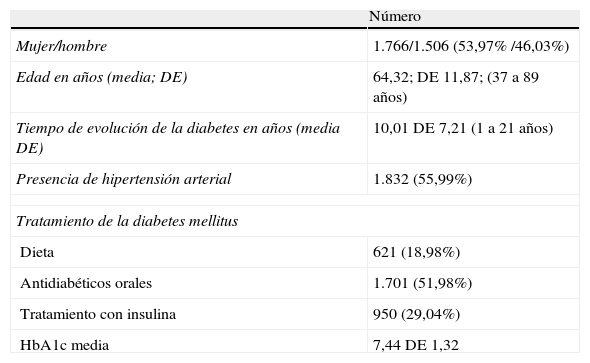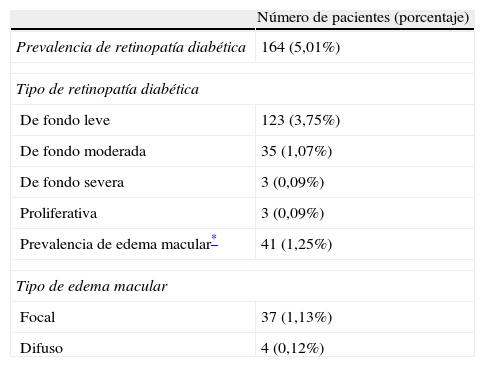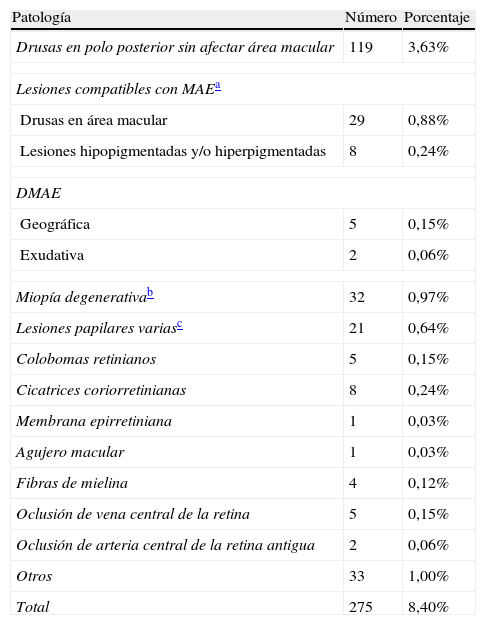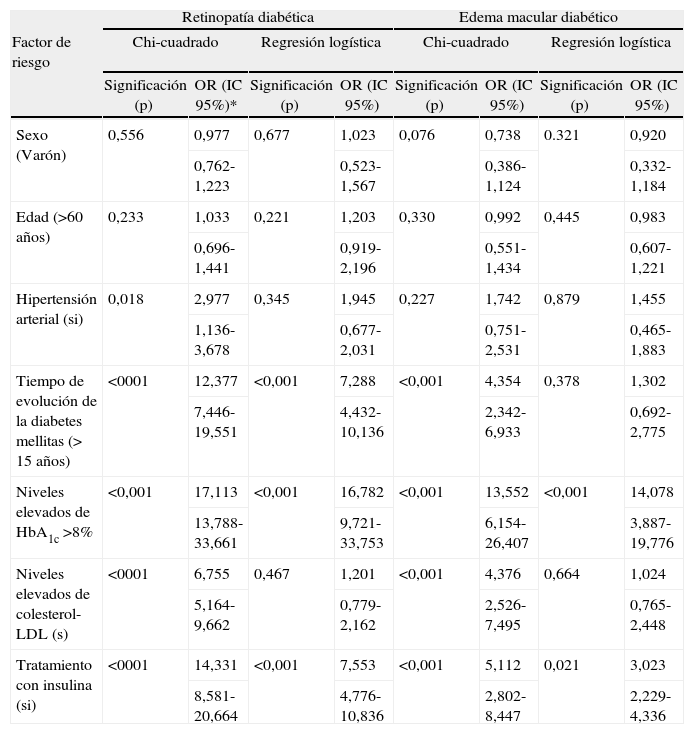Presentar los resultados tras el primer año de funcionamiento de la cámara no midriática en nuestra área, evaluando su utilidad y los problemas que hemos observado.
MétodosDurante el periodo de un año se han revisado 3.272 pacientes diabéticos tipo 2 mediante la cámara no midiátrica; estos pacientes no estaban siendo sometidos a controles periódicos en nuestro centro en razón a su patología ocular.
ResultadosLa retinopatía diabética se observó en 164 pacientes (5,01%), la forma leve en 70 pacientes (2,14%). El edema macular diabético se apreció en 41 pacientes un 1,25%. En 119 (3,63%) pacientes no se pudo interpretar la imagen debiendo ser referidos a las consultas de oftalmología, además se derivaron 113 pacientes sin retinopatía diabética, de estos la mayoría (42 pacientes) presentaban lesiones en el área macular sospechosas de maculopatía o degeneración macular asociada a la edad. Finalmente en 458 (13,99%) pacientes se precisó la instilación de colirio midriático.
ConclusionesPodemos extraer que el screening mediante cámara no midiátrica, es altamente útil para poder acceder a una gran parte de la población diabética, en especial aquella que acude con escasa frecuencia al oftalmólogo, permitiéndonos diagnosticar un número importante de pacientes susceptibles de tratamiento láser para evitar su ceguera.
The aim of the study is to present the results of the first year of using a non-mydriatic fundus camera. We performed an evaluation of its usefulness and problems.
MethodsDuring the first year of using the non-mydriatic fundus camera we evaluated 3,272 type II diabetic patients who were not being controlled in the hospital.
ResultsThe diabetic retinopathy was observed in 164 patients (5.01%), the mild form in 70 patients (2.14%). Diabetic macular oedema was observed in 41 patients (1.25%). In 119 patients (3.63%) the retinography could not be interpreted and were referred to the hospital; 113 patients also were referred due to other pathologies; the largest group of these patients had age-related macular disease or age-related macular degeneration (42 patients). Finally, 458 patients (13.99%) required mydriatic eye-drops.
ConclusionsThe non-mydriatic fundus camera is a useful technique for assessing the presence of diabetic retinopathy, particularly in patients with poor ophthalmic control. This technique may enable us to diagnose these patients who need laser treatment.
Artículo
Comprando el artículo el PDF del mismo podrá ser descargado
Precio 19,34 €
Comprar ahora










